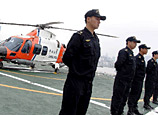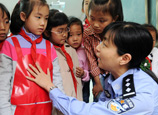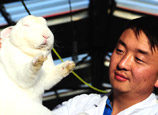
China has been rocked by a number of food safety scandals and agriculture product-related health hazards in recent years - from contaminated milk powder to the selling of rat meat as lamb. But the most recent food safety scandal hits at the core of China's food system: rice. Reports that some of China's rice is tainted with cadmium - a carcinogenic heavy metal that could induce multiple organ damage - have further deteriorated consumer confidence in the integrity of China's food system.
Today, China finds itself at the crossroads of economic development and food safety. The country's impressive growth momentum has had a significant impact on food safety through a number of channels, including rapid industrialization, agricultural intensification and urbanization. The question is: How can China continue along its current development path without sacrificing its food safety?
The robust growth of China's manufacturing sector during the past several decades means that the number of factories, mines and other industrial facilities is increasing, and industrial clusters are increasingly encroaching on agricultural land. This shift increases the risks of land and water resources being contaminated by industrial activities, threatening food safety well into the future.
At the same time, China's growing and increasingly more affluent population is demanding more food, resulting in the intensification of food production. In an effort to keep up with the rising demand and to increase profits, some farmers, food processors and traders are cutting corners on food safety and are increasingly using potentially hazardous inputs and production methods, such as unsafe levels and sources of fertilizer.
Going beyond a traditional definition of food safety, more intense food production has also been linked to a new wave of zoonotic diseases, such as avian influenza, which are infectious both to animals and humans. In particular, the increasing size and density of modern livestock operations offers a fertile environment for the transmission (and evolution) of diseases between animals and from animals to humans. According to the Institute of Development Studies, more than two-thirds of all human infectious diseases originate in animals, and the rate of animal-to-human transmission has increased over the last 40 years.
China's population is also becoming more urban, which presents its own food safety challenges. In the past, the majority of food was produced and consumed locally. Nowadays, large quantities of food are transported over long distances to reach urban centers, increasing the risk of food contamination.
Within this framework, the current rice scandal is especially noteworthy given that China is the world's largest producer and consumer of rice. Government officials in the city of Guangzhou found that eight out of 18 samples of rice (which originated in Hunan province) had high cadmium levels. Although recent government reports downgrade the severity of the contamination, uncertainly remains.
The loss of trust among consumers could significantly drive up demand for rice imports. Given China's large appetite for rice, a shift in demand from domestic- to foreign-produced rice could have a significant impact on the international rice market.
Going forward, a number of actions are needed so that the expansion of China's economy and population does not come at the cost of food safety.
First, legal, regulatory and institutional frameworks need to be upgraded. Regulatory reforms to improve food safety should cover the entire food supply chain, from production all the way to processing and marketing, accompanied by strict criminal penalties. These reforms need to be implemented within a streamlined institutional framework that clearly defines the distribution of responsibilities among government levels and agencies. And technological innovations - such as biotechnology - need to be supported by transparent and scientific regulatory systems, so that opportunities to use these technologies are not lost.
Second, food safety monitoring has to be improved. The effectiveness of food safety regulations hinges on the capacity of food safety officials to monitor compliance along the entire food supply chain. Increased resources are needed to hire and (continuously) train highly qualified inspectors. Focus should also be placed on developing and providing cutting-edge technologies and facilities to test food, soil and water for potential contamination. Local communities and consumers can play a role in improving food safety by forming local and regional organizations to monitor food quality. Online platforms can be an especially useful tool in this endeavor.
Third, stakeholder capacity to meet food safety regulations should be increased. Institutional innovations for vertical and horizontal coordination should be promoted to help smallholder farmers and other participants in the food production system meet food safety standards. Examples of innovative institutional arrangements include public-private partnerships, rural marketing cooperatives and producer associations. These platforms can, for example, be used to provide smallholders with information and training on food safety.
Fourth, there is need to help stakeholders manage risk. More productive and better-targeted social safety net programs and innovative insurance schemes are needed to cushion smallholder farmers, agribusinesses and traders against food safety shocks. Such instruments can be used to compensate farmers who lose business and revenue during the outbreak of disease and food contamination scandals.
The current rice contamination scandal, which is a staple for the majority of Chinese people, will hopefully serve as a catalyst for the implementation of these actions to improve food safety in China.
















 Turn white rabbit to 'gold' - A young entrepreneur's goal
Turn white rabbit to 'gold' - A young entrepreneur's goal


![]()
